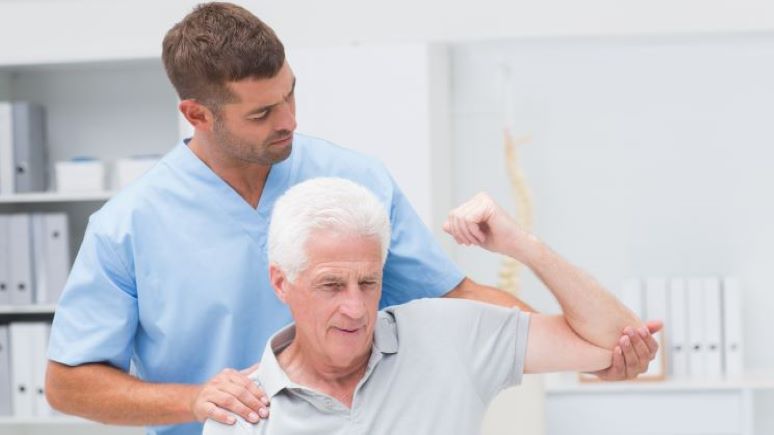There is no cure for osteoarthritis (OA). Still, there are ways to maintain joint mobility and manage the pain caused by the disease.
Osteoarthritis medications
Different medications help to relieve the symptoms of osteoarthritis in different ways. Medicines often used to treat osteoarthritis include:
- Acetaminophen: Acetaminophen (Tylenol and others) is a pain-reliever, but it does not decrease the joint inflammation caused by osteoarthritis. People with mild to moderate pain typically find Acetaminophen effective in relieving their pain. When acetaminophen is taken in amounts that exceed the recommended dose, it can cause liver damage. Acetaminophen is available over-the-counter, without a doctor’s prescription.
- Nonsteroidal anti-inflammatory drugs (NSAIDs): These medications relieve pain and decrease inflammation. Some over-the-counter NSAIDs are naproxen (Aleve and others), ibuprofen (Motrin IB, Advil, and others), and aspirin. Some NSAIDs are only available with a prescription from a doctor. NSAIDs’ side effects include bleeding problems, stomach upset, ringing in the ears, and liver and kidney damage. They should not be used by people who have stomach ulcers or bleeding. Nonsteroidal anti-inflammatory drugs can also be applied topically or rubbed into the skin at the site of pain. They may relieve pain when used this way as effectively as in pill form, with a decreased risk of side effects.
- Narcotic analgesics: If your pain is very severe, your physician may prescribe narcotic medication. Examples of narcotics include Tylenol with codeine, hydrocodone (Vicodin, Lorcet, Lortab), and Percocet. The use of narcotics carries the risk of developing an addiction, becoming dependent or becoming tolerant. The last means you need more medication to control your pain. That’s why narcotics are often given only in cases of the most severe pain and for limited amounts of time. Side effects of these drugs include dry mouth, sleepiness, constipation, and difficulty urinating.
Osteoarthritis therapy
Two of the best and most important ways to treat osteoarthritis are achieving or maintaining a healthy weight and exercising. Your physician might also recommend:
- Physical therapy: Maintaining mobility in your joints is vital. Stronger muscles can help support and stabilize weak joints. Physical therapists are professionals trained to help you with an exercise program to build your strength and mobility. They can also help you control your pain, teach you how to use new devices and how to avoid injury.
- Occupational therapy: Occupational therapists can help you learn ways to protect your joints and conserve energy in your daily life. They also can provide suggestions for assistive devices that can make your life easier and help you obtain and learn how to use such devices and equipment.
- Braces or shoe inserts: Physicians sometimes recommend devices that help decrease pain by providing support or immobilizing a joint when standing or walking.
- Pain classes: Some hospitals and medical centers hold classes for people with chronic pain. Check with your physician about what may be available in your area, or contact the Arthritis Foundation. Pain classes teach skills and techniques for coping with chronic pain.
Surgery and other treatments
If conservative methods of treatments don’t help control your symptoms, the doctor may recommend other procedures such as:
- Cortisone injections: These injections are given directly to the joint affected by osteoarthritis. Corticosteroids medications can help decrease inflammation and pain. Still, they can also increase joint damage over time, so the number of injections you can receive per year is limited. This procedure is done with a local anesthetic, usually in the doctor’s office.
- Lubrication injections: Hyaluronic acid injections are sometimes used to treat knee pain caused by osteoarthritis. This medication is similar to one of the components found in joint fluid. It can provide some cushioning in the knee joint.
- Realignment of bones: This surgical procedure is called an osteotomy. It can decrease knee pain by realigning the leg, so your body’s weight is moved away from the damaged portion of the joint.
- Joint replacement surgery: This surgical procedure is called arthroplasty. The joints most often replaced are the knee and hip joints. When this procedure is performed, the surgeon removes the damaged joints and replaces them with metal and plastic implants. Risks of surgery include infection, bleeding, and blood clots.
















Leave a Reply
You must be logged in to post a comment.